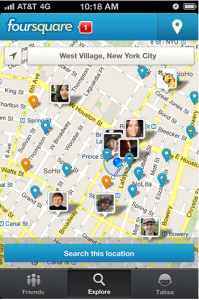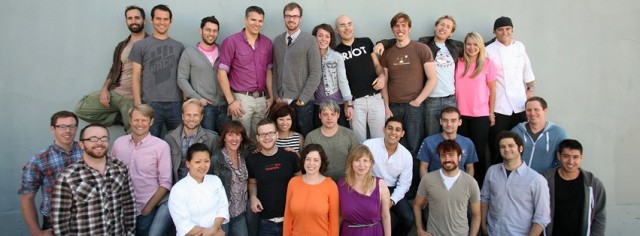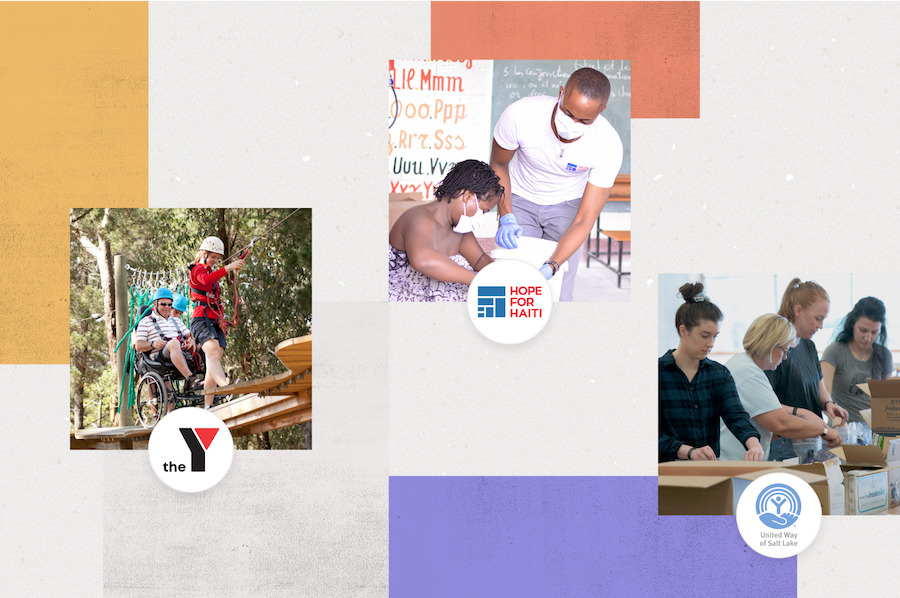Stories from our first year
This month, we celebrated an important anniversary: we turned one year old. When we launched a year go, we had an ambitious mission: to create a shared task management platform that empowers teams of like-minded people to do great things. Looking back on the year that has passed, we are both humbled and delighted by how this mission is going. In the course of our first year, tens of thousands of teams looking for a better way to work together have adopted Asana. Every day, these teams tell us stories – not only about how much they love the product, but about how completely Asana has changed the way they work.
To celebrate the anniversary of our launch, we collected three of these stories from three distinct kinds of teams: a tech startup, a fast-growing organic food company and a leading Pacific Coast aquarium. The work these three teams do couldn’t be more different, but the challenges of team coordination and communication that brought them to Asana were strikingly similar.
Foursquare Launches 5.0
 Right around the time Foursquare passed 100 employees over the last year, we started building Foursquare 5.0. This update was a big deal: we were overhauling Foursquare’s core mechanics, evolving from check-ins towards the spontaneous discovery of local businesses. As we built the new app, we needed a way to gather feedback from the entire team.
Right around the time Foursquare passed 100 employees over the last year, we started building Foursquare 5.0. This update was a big deal: we were overhauling Foursquare’s core mechanics, evolving from check-ins towards the spontaneous discovery of local businesses. As we built the new app, we needed a way to gather feedback from the entire team.
We tried what felt like every collaboration tool around. Group emails were a mess. Google Docs was impossible to parse. We’d heard about Asana and decided to give it a shot.
Using Asana, we were easily able to collect product feedback and bugs from everyone in the company, then parse, discuss, distribute and prioritize the work. It became an indispensable group communication tool.
Foursquare 5.0 was a giant success, and we couldn’t have done it without Asana.
–Noah Weiss, Product Manager
Bare Fruit Coordinates Their Global Team
 Bare Fruit & Sundia is supported by a small team of 18 people around the world. Our success is dependent upon collaboration between internal teams and vendors to manufacture, process and distribute our products nationwide.
Bare Fruit & Sundia is supported by a small team of 18 people around the world. Our success is dependent upon collaboration between internal teams and vendors to manufacture, process and distribute our products nationwide.
Because of our unique company structure, we had to choose the right infrastructure to manage the ins-and-outs of our business, including the many moving pieces intrinsic to the manufacturing industry. We decided to use Asana to facilitate communication between teams and to keep everyone up to date and on top of tasks so nothing falls through the cracks.
Put simply, Asana has become institutional memory for our business, the common thread that ties our company teams (called “ecosystems”) together. Our ecosystems are the company’s bread and butter: they enable us to find the single path to accomplishment while relying on folks from multiple external partners. A single employee can be part of multiple workspaces and each workspace multiple ecosystems.
That is the beauty of Asana: it supports all equally well.
–Bradford Oberwager, President & CEO
Aquarium of the Bay Brings Shark Week to San Francisco
Each year, the Aquarium of the Bay inspires more than 500,000 visitors from around the world. As the Aquarium’s Director of Marketing, I have a small team with big ambitions to make our Aquarium a leading voice for the San Francisco Bay.
 Our marketing department doesn’t have the benefit of a project manager, administrative support or a dedicated web developer, which means every new project keeps us on our toes. So this summer, when we celebrated Shark Week, we needed a tool to help us manage a sprawling set of projects.
Our marketing department doesn’t have the benefit of a project manager, administrative support or a dedicated web developer, which means every new project keeps us on our toes. So this summer, when we celebrated Shark Week, we needed a tool to help us manage a sprawling set of projects.
From coordinating the production of our Discovery Channel commercial to developing cool graphics and tracking media outreach, Asana helped our team collaborate at a higher level. Hands down, Asana enabled us to pull off our most successful Shark Week to date.
Now, we are looking to Asana to keep us on track as we build the biggest exhibit we’ve undertaken in years. This new project is an order of magnitude larger than Shark Week — with heavy construction, new animals and expanded programs for our guests, along with a big new marketing campaign. Asana is our secret weapon. It’s helping us take on bigger projects than we could before.
–Cyril Manning, Director of Marketing and Communications
Then, Of Course, There Is Us
It’s an understatement to say that we rely on Asana. We use our own product to manage every function of our business. Asana is where we plan, capture ideas, build meeting agendas, prioritize our product roadmap, document which bugs to fix, and list the snacks to buy. It’s our CRM, our editorial calendar, our Applicant Tracking System, and our new-hire orientation system. Every team in the company – from product, design, and engineering to sales and marketing to recruiting and user operations – relies on the product we are building to stay in sync, connect our individual tasks to the bigger picture and accomplish our collective goals.
With Asana as our foundation, we’ve done a lot in a year, including:
- Launched Asana to the public
- Built and launched Premium Workspaces for larger teams
- Created Inbox, our first step towards solving what’s wrong with email
- Added Subtasks and Hypertext
- Launched a major new version of our iPhone app
- Along the way, empowered tens of thousands of teams to expand their potential and do great things
- Added Founders Fund and Peter Thiel as investors, and welcomed Peter to our board
In between these bigger things, we’ve made hundreds of improvements, big and small, day-in and day-out, to our product and company. None of it would have been possible if we weren’t using Asana to build Asana, to improve the world, to empower its teams, and to change the way they work.
Thanks for being part of the journey. ♥


